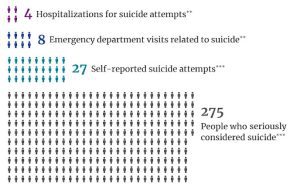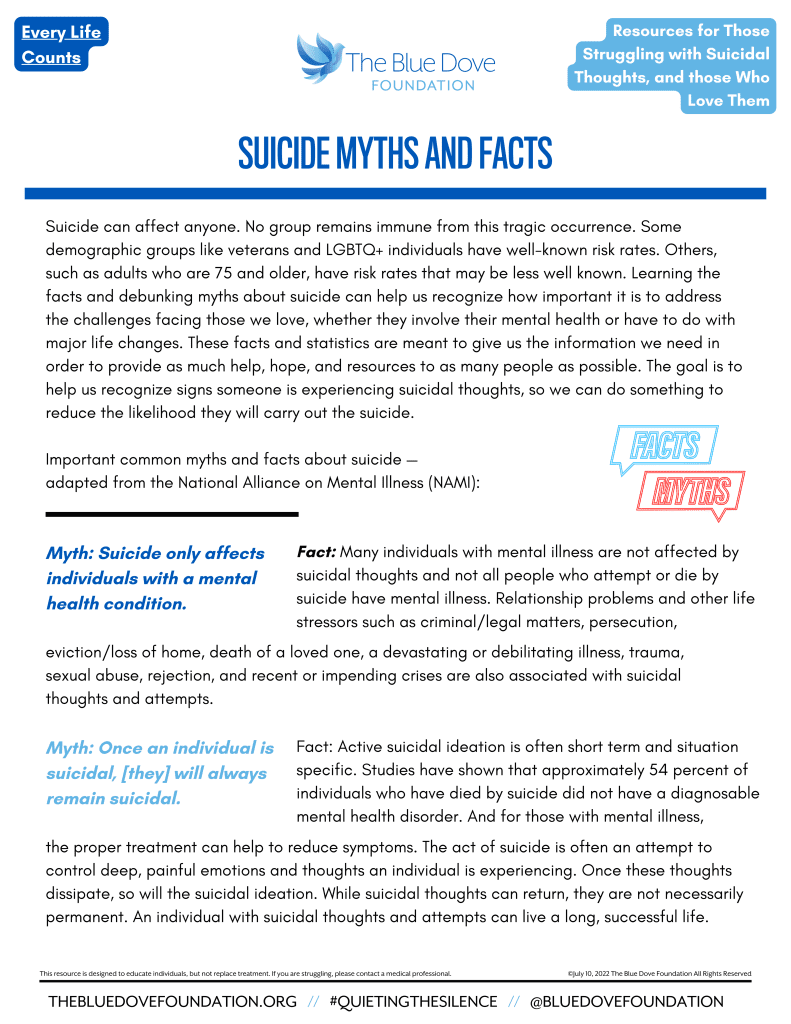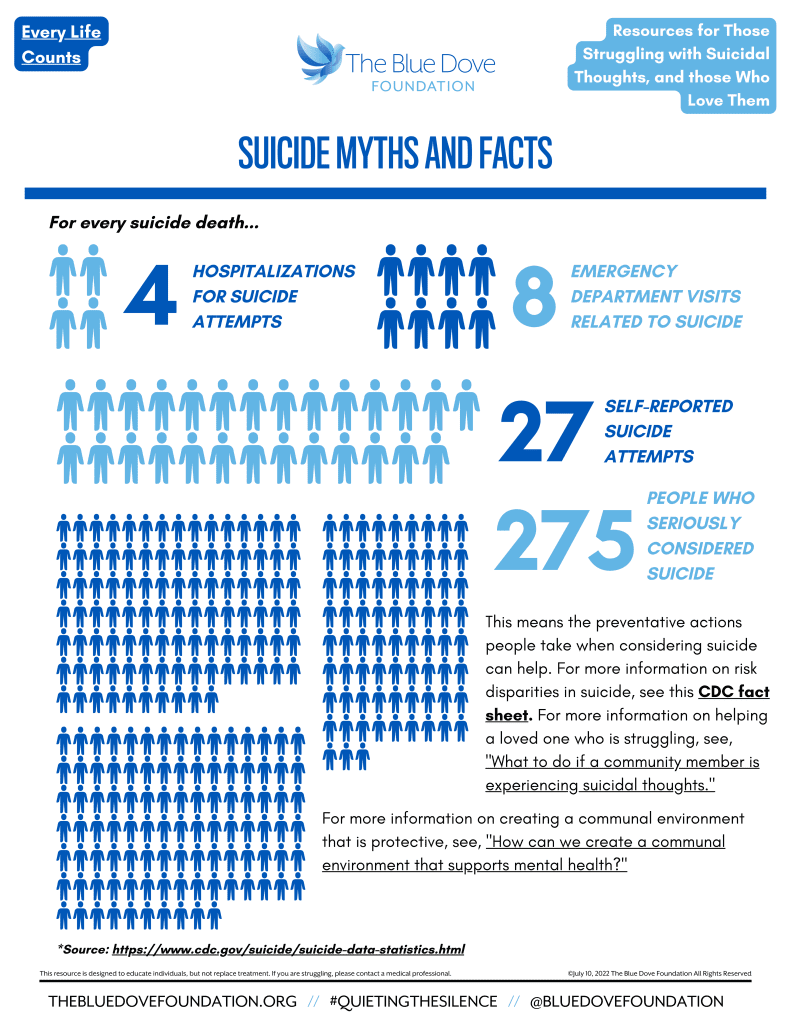Suicide can affect anyone. No group remains immune from this tragic occurrence. Some demographic groups like veterans and LGBTQ+ individuals have well-known risk rates. Others, such as adults who are 75 and older, have risk rates that may be less well known. Learning the facts and debunking myths about suicide can help us recognize how important it is to address the challenges facing those we love, whether they involve their mental health or have to do with major life changes. These facts and statistics are meant to give us the information we need in order to provide as much help, hope, and resources to as many people as possible. The goal is to help us recognize signs someone is experiencing suicidal thoughts, so we can do something to reduce the likelihood they will carry out the suicide.
Important common myths and facts about suicide—adapted from the National Alliance on Mental Illness (NAMI):
———————————–
Myth: Suicide only affects individuals with a mental health condition.
Fact: Many individuals with mental illness are not affected by suicidal thoughts and not all people who attempt or die by suicide have mental illness. Relationship problems and other life stressors such as criminal/legal matters, persecution, eviction/loss of home, death of a loved one, a devastating or debilitating illness, trauma, sexual abuse, rejection, and recent or impending crises are also associated with suicidal thoughts and attempts.
Myth: Once an individual is suicidal, [they] will always remain suicidal.
Fact: Active suicidal ideation is often short term and situation specific. Studies have shown that approximately 54 percent of individuals who have died by suicide did not have a diagnosable mental health disorder. And for those with mental illness, the proper treatment can help to reduce symptoms.
The act of suicide is often an attempt to control deep, painful emotions and thoughts an individual is experiencing. Once these thoughts dissipate, so will the suicidal ideation. While suicidal thoughts can return, they are not necessarily permanent. An individual with suicidal thoughts and attempts can live a long, successful life.
Myth: Most suicides happen suddenly without warning.
Fact: Warning signs—verbally or behaviorally—precede most suicides; therefore, it’s important to learn and understand the warnings signs associated with suicide. Many individuals who are suicidal may show warning signs only to those closest to them. These loved ones may not recognize what’s going on, which is why it may seem like the suicide was sudden or without warning.
Myth: People who die by suicide are selfish and take the easy way out.
Fact: Typically, people do not die by suicide because they do not want to live—people die by suicide because they want to end their suffering. These individuals are suffering so deeply they feel helpless and hopeless. Individuals who experience suicidal ideations do not do so by choice. They are not simply “thinking of themselves” but rather are going through a very serious mental health symptom due to either mental illness or a difficult life situation.
Myth: Talking about suicide will lead to and/or encourage suicide.
Fact: Suicide carries a widespread stigma, and as a result, many people are afraid to speak about it. But talking about suicide not only reduces the stigma; it allows individuals to seek help, rethink their opinions, and share their story with others. We all need to talk more about suicide.
We hope debunking these common myths will allow individuals to look at suicide from a different angle—one of understanding and compassion for an individual who is struggling internally. Maybe they are struggling with a mental illness, or maybe they are under extreme pressure and do not have healthy coping skills or a strong support system.
As a society, we should not be afraid to speak up about suicide, to speak up about mental illness or to seek treatment for an individual in need. Eliminating the stigma starts by understanding why suicide occurs and advocating for mental health awareness within our communities.
For every suicide death…

(https://www.cdc.gov/suicide/suicide-data-statistics.html)
This means the preventative actions people take when considering suicide can help. For more information on risk disparities in suicide, see this CDC fact sheet: https://www.cdc.gov/suicide/facts/disparities-in-suicide.html
For more information on helping a loved one who is struggling, see: “What to do if a community member is experiencing suicidal thoughts?”
For more information on creating a communal environment that is protective, see: “How can we create a communal environment that supports mental health?”
Best Colleges College Suicide Prevention Guide: Research indicates that more and more college students are thinking about suicide. Learn how to recognize the warning signs and get help.




